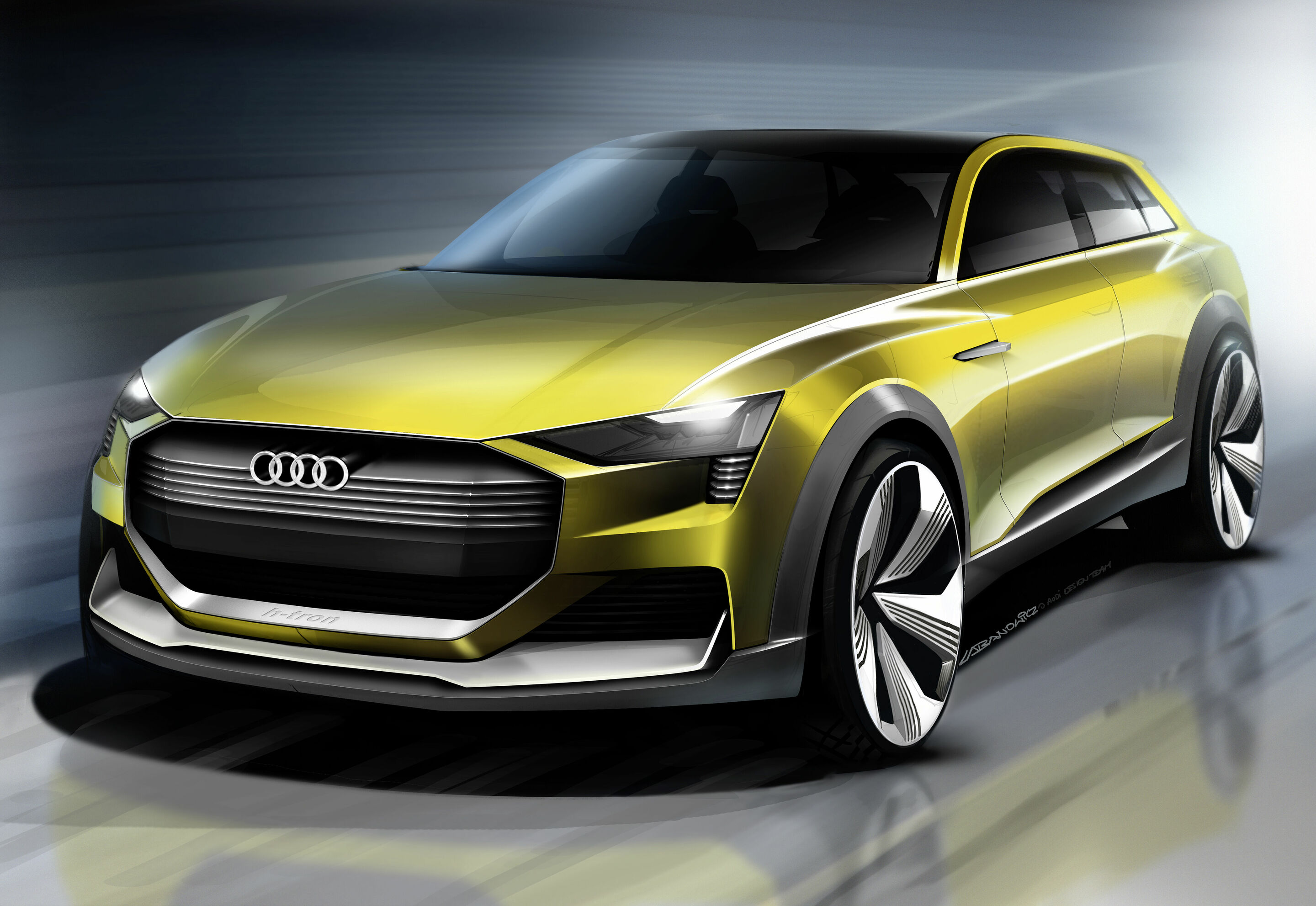Highly streamlined: the exterior design
Back to overviewMeasuring 4.88 meters (16.0 ft) in length, 1.93 meters (6.3 ft) wide and with a 2.91 meter (9.5 ft) wheelbase, the Audi h-tron quattro concept is positioned between the Audi Q5 and the Audi Q7 SUVs. But at just 1.54 meters (5.1 ft) tall, it is much lower in height than the two production models. The greenhouse is particularly low, the roof line drops down again quickly and the D‑posts are correspondingly flat, giving the body shape markedly coupe-like traits.
The design language of the technology study has been developed in close collaboration between aerodynamics engineers and designers. The drag coefficient of 0.27 enables the Audi h-tron quattro concept to cut through the wind with ease and also plays a major role in the car’s high range of up to 600 kilometers (372.8 mi). The aerodynamic concept includes a long body along which the air flows cleanly, a tapered tail end with sharp separating edges, plenty of fine-detailing on the outer skin and the wheels, and an aerodynamically optimized floor pan with newly designed microstructures. These draw inspiration from the bionic model of shark skin.
The Audi h-tron quattro concept sports aerodynamic elements on the flanks and at the rear. At speeds of 80 km/h (49.7 mph) upward, they direct the flow of air to improve its movement around the vehicle.
Thanks to the refined aeroacoustics, the level of wind noise in the Audi h-tron quattro concept is impressively low even when traveling at speed.
The front end of the Audi h-tron quattro concept creates an impression of width, power and poise. The Singleframe grille is almost completely open. This is attributable to the higher amount of cooling air required by the fuel cell drive than by a battery-powered car. Behind the Singleframe grille and the large air inlets there is one radiator on either side.
In the upper section of the grille, slats act as visual ties between the five OLED (organic light emitting diode) elements of each lighting signature. Each of these combines an LED luminary with a flat OLED element. The OLEDs produce particularly homogeneous light and can create various different lighting scenarios.
The frame of the grille is made from brushed aluminum with polished edges, and it displays an h-tron logo in the lower clip. A compact sensor rack is integrated discreetly into the grille – it includes most of the sensors for the driver assistance systems and the new systems for piloted driving.
The equipment and data specified in this document refer to the model range offered in Germany. Subject to change without notice; errors and omissions excepted.
